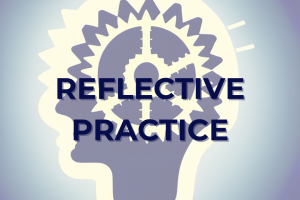
Navigating the Seas of Online Learning: A Guide for Students, Teachers, and Parents
- Posted by INU
- Categories Edtech, Intentional Parenting, Student Reflections, Teacher Reflections
- Date August 21, 2023
In the age of technology, online learning has transformed education, bridging geographical gaps and offering unprecedented flexibility. Whether you’re a student, teacher, or parent, understanding the nuances of online learning is crucial for success. In this blog post, we’ll delve into the world of virtual classrooms, offering insights and advice for making the most out of this digital educational journey.
1. For Students: Embracing Independence
Online learning empowers students to take charge of their education. Here are some tips for success:
- Set a Schedule: Establish a routine that mimics a traditional school day. This helps maintain a sense of structure.
- Stay Organized: Keep a digital calendar for assignments, deadlines, and virtual classes to stay on top of your tasks.
- Active Participation: Engage in discussions, ask questions, and collaborate with peers in virtual classrooms. This enhances your learning experience.
2. For Teachers: Fostering Connection
As a teacher, building a virtual classroom community is essential. Here’s how:
- Clear Communication: Set clear expectations for assignments, virtual sessions, and communication methods.
- Interactive Content: Utilize multimedia resources, educational videos, and interactive exercises to keep students engaged.
- Feedback Loop: Provide timely feedback to guide students’ progress and address any challenges they might face.
3. For Parents: Supporting Online Learners
Parents play a vital role in ensuring a successful online learning experience for their children:
- Designated Learning Space: Create a quiet, organized space where your child can focus on their studies.
- Regular Check-Ins: Keep an open line of communication with your child to understand their progress and address any concerns.
- Tech Support: Familiarize yourself with the technology platforms used for online learning so you can assist if technical issues arise.
4. Balancing Screen Time and Well-Being
Spending extended periods in front of screens can impact well-being. Here’s how to find balance:
- Scheduled Breaks: Encourage short breaks between virtual classes or study sessions to rest eyes and stretch.
- Physical Activity: Incorporate physical activity into daily routines to promote overall health.
- Mindfulness Practices: Introduce mindfulness exercises to reduce stress and improve focus.
Conclusion:
Online learning has revolutionized education, presenting both students and educators with exciting possibilities. Embracing technology-enhanced learning environments allows for personalized education and fosters critical digital skills, setting learners up for success in our rapidly evolving world. Online learning offers unparalleled opportunities, but it also comes with its own set of challenges. By embracing independence, fostering connection, supporting learners, and prioritizing well-being, students, teachers, and parents can navigate these challenges successfully. Remember, in the digital age, collaboration and adaptability are key. Together, we can make online learning a rewarding journey of discovery and growth.
Tag:Course
You may also like

First Day of School

Off to a Smooth Start with the First Week of School



